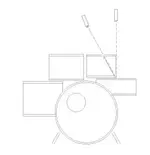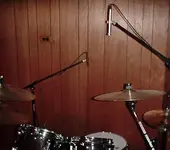F
foreverain4
New member
i have tried it like this and was really surprised at how good it sounded right off the bat. i can imagine spending just a bit more time with possitioning would make it killer. i did have to add a bass drum mic though. it just was not thick enough on the low end. i put the bass drum mic partly into the hole just so the diaphram was aligned with the reasonant head. it sounded really nice combined with the attack from the overheads.

 , you will have a problem balancing the kit.
, you will have a problem balancing the kit. .
.
